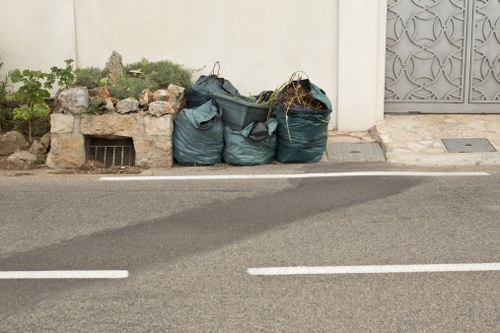Bed Disposal in Garden Clearance

Garden clearance often involves the removal of various structures and materials, including garden beds. Proper bed disposal is essential not only for maintaining a tidy outdoor space but also for ensuring environmental sustainability. In this article, we will explore the best practices for bed disposal during garden clearance, providing you with comprehensive guidance to make informed decisions.
Whether you're renovating your garden, downsizing, or simply decluttering, understanding how to dispose of garden beds responsibly is crucial. Improper disposal can lead to environmental harm, legal issues, and unnecessary costs. Therefore, it's important to approach bed disposal with a strategic plan in mind.
We'll cover the importance of proper disposal, the steps involved, different disposal methods, and when it might be beneficial to seek professional help. By the end of this guide, you'll have a clear understanding of how to manage bed disposal effectively as part of your garden clearance project.

Importance of Proper Bed Disposal
Proper bed disposal is a critical component of garden clearance for several reasons. It ensures that your garden remains healthy, aesthetically pleasing, and environmentally friendly. Additionally, adhering to proper disposal methods can help you comply with local regulations and avoid potential fines.
Environmental Impact
One of the primary reasons for proper bed disposal is to minimize environmental impact. Disposing of garden beds incorrectly can lead to soil contamination, the spread of invasive species, and increased waste in landfills. By opting for sustainable disposal methods, you contribute to the preservation of the environment and promote responsible gardening practices.
Moreover, recycling or reusing materials from garden beds reduces the demand for new resources, conserving natural habitats and reducing your carbon footprint.

Steps for Bed Disposal in Garden Clearance
Assessing the Beds
Before disposing of any garden beds, it's important to assess their condition and material. Determine whether the beds are made of wood, metal, plastic, or other materials, as this will influence your disposal method. Check for any signs of wear, rot, or damage that might affect recycling or repurposing options.
Consider whether the beds can be salvaged or repurposed for other projects. Sometimes, with a bit of creativity, old garden beds can be transformed into outdoor planters, raised beds for vegetables, or decorative features within your garden.
By thoroughly assessing your beds, you can make informed decisions about the most appropriate disposal method, ensuring both environmental responsibility and cost-effectiveness.

Choosing the Right Disposal Method
Selecting the appropriate disposal method is essential for effective garden clearance. Here are the most common options:
- Recycling: Many garden bed materials, such as metal and certain plastics, can be recycled. Check with your local recycling center to see what materials they accept and follow their guidelines for preparation and transportation.
- Donating: If your garden beds are still in good condition, consider donating them to local community gardens, schools, or charitable organizations. This not only helps others but also reduces waste.
- Hiring a Professional Service: For large-scale or complex projects, employing a professional garden clearance service can save time and ensure proper disposal. Professionals have the expertise and equipment to handle various materials safely and efficiently.
Each disposal method has its advantages, so evaluate your specific situation to determine the best approach for your garden clearance project.

DIY vs Professional Garden Clearance
Benefits of DIY
Opting for a DIY approach to garden clearance and bed disposal can be both fulfilling and cost-effective. By handling the task yourself, you have complete control over the process, allowing you to customize the approach to suit your specific needs and preferences.
Additionally, DIY garden clearance can save you money on labor costs. With the right tools and a bit of planning, you can efficiently manage the disposal of your garden beds without the need for professional assistance.
When to Hire Professionals
While DIY can be effective for smaller projects, there are situations where hiring professionals is the better option. Large or complex garden clearances may require specialized equipment and expertise that professionals can provide. Furthermore, professionals are well-versed in local regulations and can ensure that all disposal is conducted legally and responsibly.
Hiring a professional service can also save you time and reduce the physical strain associated with garden clearance tasks, making it a worthwhile investment for extensive projects.

Conclusion
Proper bed disposal is a vital aspect of garden clearance that ensures environmental responsibility, compliance with regulations, and the maintenance of a beautiful outdoor space. By assessing your garden beds, choosing the right disposal method, and considering whether to undertake the task yourself or hire professionals, you can achieve an efficient and sustainable garden clearance.
Contact us today to schedule your garden clearance and ensure that your bed disposal is handled with care and expertise. Let our team of professionals help you transform your garden into a pristine and eco-friendly haven.